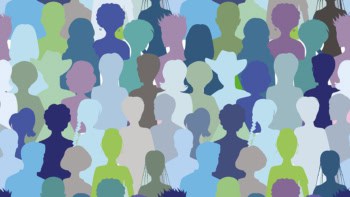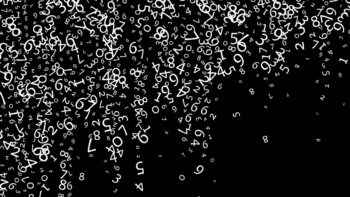JV Chamary reviews Superior: the Return of Race Science by Angela Saini
Race is a social construct and not a scientific concept, so why do many people still believe it has some basis in biology? That’s the big topic that science journalist Angela Saini explores in her latest book Superior: the Return of Race Science.
No other popular book that I know of has provided such a comprehensive overview of the science of race as Superior. Each one of its 11 chapters covers how views of race have developed in various fields, including anthropology, cognitive science and eugenics (the belief that the genetic quality of a human population can be improved). Although this path through history is well-trodden, Saini is an enlightening guide.
The highlight of her tour is a follow-the-money investigation into a pseudoscientific journal, its support by a secretive fund, and the “race realists” who wrongly think race exists (beyond a social construct), and therefore twist scientific facts to legitimize their racist beliefs.
At one point, Saini recounts an exchange with German biochemist Gerhard Meisenberg, the journal’s editor-in-chief, who can only communicate via e-mail from a cruise ship in the Caribbean. Describing supposed differences in school performance for pupils from various ethnic groups in the US, Meisenberg claims “The differences are small, but the most parsimonious explanation is that much and perhaps most of this is caused by genes.” Not only is there little evidence to support his assertion, it betrays an outdated belief in genetic determinism. In fact, the way complex features like intelligence ultimately manifest (the phenotype) is often the result of interactions between an ensemble of genetic variants (the genotype) with the environment and other factors. There’s a satisfying feeling of schadenfreude when (often white) men like Meisenberg reveal their ignorance through their own words.
The only misstep in Saini’s book – and it’s a significant one – is chapter six, which focuses on my area of interest, biology. After describing how the phrase “human biodiversity” was hijacked by an online forum of race realists, Saini (who has a background in physics and engineering) makes an unconvincing argument that “population” is a 21st-century rebranding of “race”. She writes that “Population genetics itself was born out of post-Second World War efforts to move away from traditional race science and eugenics,” but this is incorrect as the field began in the early-1930s. And while it’s true that “population” could be used to describe a group with distinctive features, it’s always been a general term for a collection of individuals with anything in common, such as inhabiting a particular geographic location.
Chapter six revolves around the Human Genome Diversity Project, a large study of variation first proposed in the 1990s that involved collecting “isolates” from indigenous populations. Besides ethical issues, the project was controversial in that it chose which populations to study (thereby risking unconscious bias in the analysis), rather than selecting random samples from across the world. As Saini explains, “Anti-racist as the scientists behind the project were, they had somehow fallen into the trap of treating groups of people as special and distinct, in the same way that racists do. They were still forcing humans into groups, even if they weren’t calling those groups races.”
But Saini’s argument against grouping is stretched too far. In 1972 population geneticist Richard Lewontin published a paper showing that, based on differences in a few proteins, there’s more variation within traditional “races” (such as Aborigines, African and Caucasian) than between them. Since then, some studies have reached similar conclusions. Cherry-picking the supporting evidence, Saini criticizes the Human Genome Diversity Project: “If the genetic variation between us was already known to be trivial, then why embark on a multi-million-dollar international project to study it at all?”
That’s a rhetorical question and yes, we’re almost identical at a global level, but that doesn’t mean genetic variants don’t cluster within populations at smaller scales. Saini believes we shouldn’t use such genetic clustering to put humans into any kind of group. “Dismantling the edifice of race is about fundamentally rewriting the way we think about human difference, to resist the urge to group at all.” So any scientist who thinks humans can be classified into groups is effectively a race realist.
The Human Genome Diversity Project was led by population geneticist Luigi Luca Cavalli-Sforza. In 2000 he wrote the book Genes, Languages and Peoples, which includes a section titled “Why classify things?” that explains the reasons behind taxonomy – the practice of putting things into groups and giving them names such as “species”. Saini criticizes Cavalli-Sforza for not mentioning politics or social history in this section, missing the fact he was explaining why humans classify anything. Saini seems to want biologists to treat humans as a special case, the opposite of what a decent biologist should do, which is to study ourselves objectively, as if we were just any other organism.
So why shouldn’t we classify humans? While Saini never states her position explicitly, many of her points relate to how research on human variation is perceived by the public. When relaying what philosopher Lisa Gannett thinks of using statistics to cluster genetically similar groups (with her catchy-yet-empty phrase “statistical racism”), Saini says “It doesn’t necessarily matter how differences are distributed, so long as they are there in some form or another [which] is what has since been seized upon by people with racist agendas.”
Should climate scientists not publish data on temporary cooling periods because it might be used by climate-change deniers as evidence that global warming isn’t happening? If the central chapter of Superior is suggesting that biologists shouldn’t create groups – because they could be seen as a “race” – for fear that their results could be misrepresented by race realists, that’s a cowardly solution. It’s ironic because this book required incredible bravery to write.
Those who are prejudiced against others will always find ways to justify hatred
In my (possibly unpopular) opinion, I don’t think biologists should stop trying to classify humans because they’re afraid their work will be misused. Those who are prejudiced against others will always find ways to justify hatred no matter what – based on political or religious ideology, for example, not just race. It stems from tribalism or the “us-versus-them” mentality (othering). Personally, I prefer the approach of environmental activist Greta Thunberg, to focus anger at those in power. Real racism is when people like Donald Trump associate features such as skin colour with behaviour, which perpetuates cultural stereotypes.
At 12 years old I was almost suspended from school for fighting a fellow pupil who called me a “chocolate bar”. You can never fully understand racism unless you experience it, just as you can never truly understand sexism without being a woman, as convincingly covered in Saini’s previous book, Inferior (July 2017).
In the prologue to Superior, Saini says that she “wanted to understand the biological facts about race”. Her misunderstanding of why biologists classify things shows that she hasn’t quite managed to shift her view of biology from a human-centric perspective, but I highly recommend this book nonetheless. Superior’s subtitle suggests that race science is returning. But when Saini’s book is considered as a whole, from studies of newly discovered fossils to IQ scores, that doesn’t seem true – the sad truth is it never went away.
- 2019 4th Estate £16.99hb 352pp




